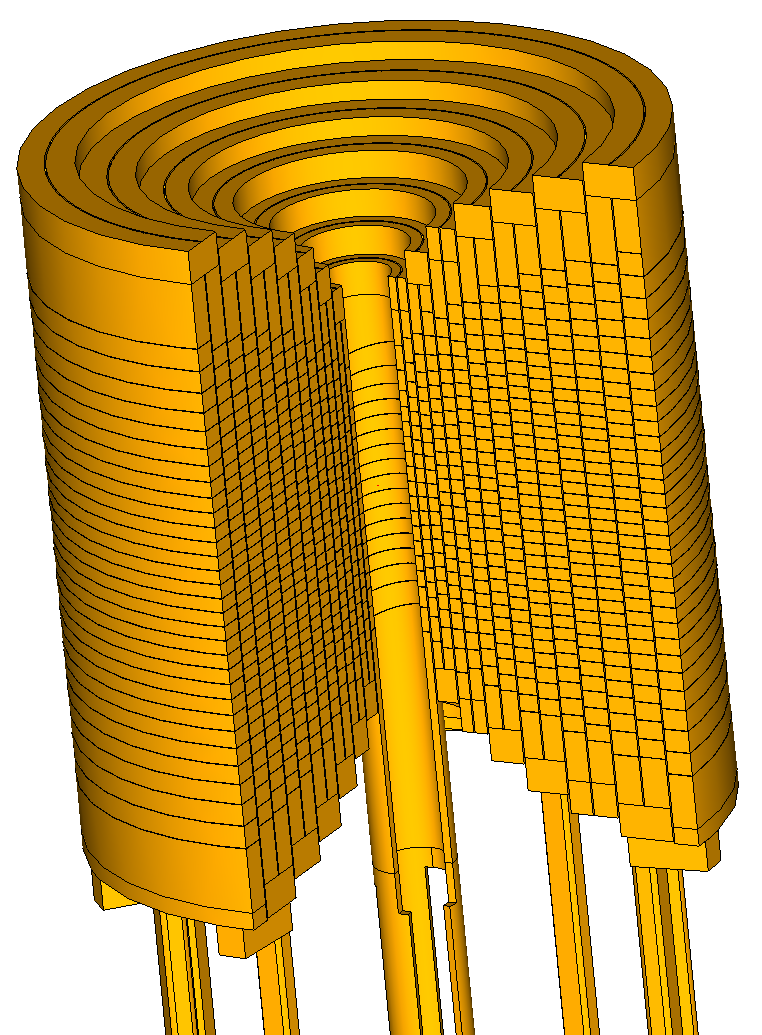HiFiMagnet documentation
Welcome to HiFiMagnet documentation!
| The HiFiMagnet documentations introduce the HiFiMagnet project, models, and process to build and run an application. Already informed users may skip directly to User Manual. |
| This documentation is based on antora. You wish to contribute? Please consult the contribute section to learn how to proceed! |
1. Introduction
High Field Magnets are an essential ingredient for many research areas (e.g. High Energy Physics in CERN, High resolution MRI for NeuroSciences). The Laboratoire National de Champs Magnétiques Intenses (LNCMI) is a French large scale facility, also part of European Magnetic Field Laboratory (EMFL), that build and provides such magnets in solenoidal configuration. This facility enables researchers to perform experiments in the highest possible magnetic field: DC magnetic fields up to 37 T are provided at the Grenoble site and pulsed fields up to 99 T at Toulouse.
The technology used for DC magnets relies on the polyhelix technic. The magnet consists in a set of Copper alloy tubes in which an helical cut has been machined by Electric Discharge Machining (EDM) and connected into series. Each tube is refered as an helix and the resulting magnet is the so-called PolyHelix insert cut by EDM.
 |
 |
|---|
The use of classical resistive materials as Copper alloys enables to reach higher magnetic field than those provided by magnets made out of Low Temperature Superconductor material (namely 24.5 tesla). To achieve these values the magnets are powered by 24 MW and some water cooling is needed to dissipate the Joules losses and keep the magnet temperature below some heuristic threshold.
2. What is HiFiMagnet?
HiFiMagnet is a research project carried out by the LNCMI in collaboration with Institut de Recherche Mathématique Avancée (IRMA) and Centre de modélisation et de simulation de Strasbourg (Cemosis).
The goals are twofold:
-
to build a hierarchy of numerical models ranging from 2D axi to 3D, and including more and more physics. The idea here is to reconsider the hypothesis that are needed to derive the semi-analytical approximations upon which our standard design and optimization procedures are based and ultimately to quantify the hypotheses effects;
-
to complement our standard design by performing sensitivity analysis and uncertainty quantification on material properties, operational parameters and geometric clearances. It allows e.g. to identify the important parameters, to perform quantile estimation, to compute probability of failure and ultimately to provide safety operational controls.
Models have been implemented with the finite element library Feel++ and the Feel++ toolboxes.
Actually HiFiMagnet is a software chain for High Field Magnets that consist mostly in a set of 3 tools:
-
one for pre-processing,
-
one for running simulations,
-
one for post-processing.
These tools are described in the manuals below.
HiFiMagnet is currently available:
-
natively on Debian/Ubuntu Os,
-
throught WSL on Windows 10,
-
as private Docker and Singularity images,
3. Typical workflow
HiFiMagnet use follows this scenario:
-
define an axisymetrical magnet design with MagnetTools, a in-house software for Axi configuration,
-
create the 3D geometry of the magnet from axisymetrical design with HiFiMagnet Salome plugin,
-
simulate the 3D behaviour of the magnet with HiFiMagnet.
The reader is encouraged to read the manuals in the next section starting with the Model manual that gives details about the physical modelling considered.
5. Help and Support
We’re always happy to help out with HiFiMagnet or any other questions you might have. You can ask a question or signal an issue in a chat room:
To contribute to the development of HiFiMagnet see the dev section.
For help or questions more related to Feel++ see here.
6. Contribute to this documentation
You can contribute to improve this documentation on GitHub.
To contribute to HiFiMagnet…
7. Copyright and Licensing
Copyright © 2010-2017 by Feel++ Consortium
Copyright © 2005-2015 by Université Joseph Fourier (Grenoble, France)
Copyright © 2005-2015 by University of Coimbra (Portugal)
Copyright © 2011-2015 by Université de Strasbourg (France)
Copyright © 2011-2015 by CNRS (France)
Copyright © 2005-2006 by Ecole Polytechnique Fédérale de Lausanne (EPFL, Switzerland)
See the LICENSE file for details
8. Authors
HiFiMagnet development is led by Christophe Trophime with the close collaboration of Christophe Prud’homme and Vincent Chabannes. It has received contributions from many other individuals.
For the book, special thanks to Gabriel Mayaffre.








